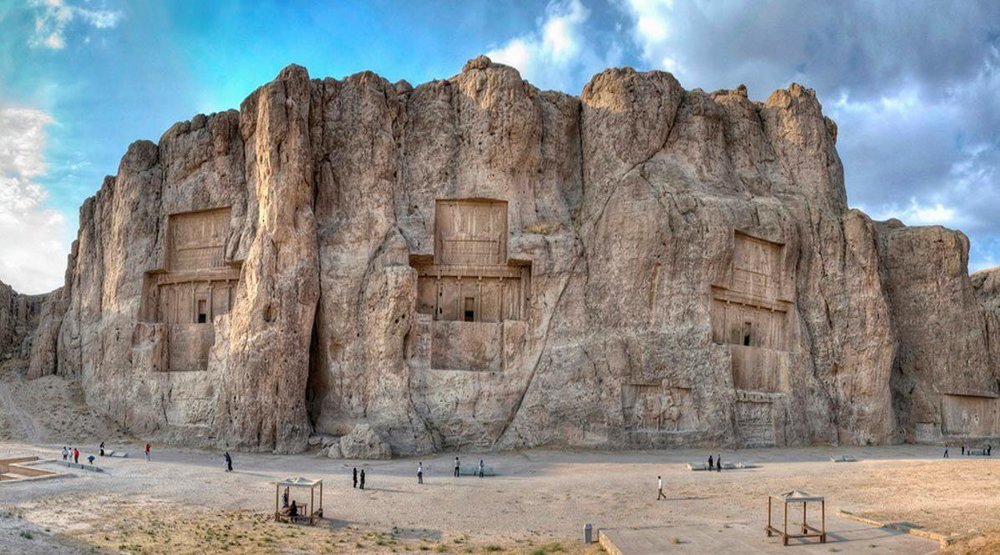Sasanian ossuary inscription discovered at Naqsh-e Rostam

TEHRAN – Archaeologists have uncovered a funerary inscription linked to an ossuary from the late Sasanian period at the Naqsh-e Rostam archaeological site in Marvdasht, southern Iran.
The inscription, written in Pahlavi script and engraved horizontally on rock beside an ossuary, belongs to a category of funerary texts.
Abolhassan Atabaki, a historian, told local media the inscription consists of seven lines but has been heavily damaged over time, making many characters difficult to read. “The text contains the name of a deceased individual who ordered the construction of this ossuary,” Atabaki told Jamaran news outlet, adding that preliminary studies date the piece to the late Sasanian era.
Najmeh Ebrahimi, an expert on Sasanian history, said ossuaries were a common burial method at the time. In this practice, corpses were first placed on mountain tops to be cleaned of flesh by scavenging birds and animals, then the sun-bleached bones were deposited in stone niches carved into cliffs.
This method preserved the sanctity of elements such as soil, which Zoroastrians considered sacred,” she said.

Ebrahimi noted that most known examples are in central Marvdasht, around the ancient city of Estakhr and the Naqsh-e Rostam area, including sites such as Hajjiabad and Garmabad, where over 100 ossuary niches have been recorded.
Naqsh-e Rostam, a cliffside necropolis in Fars province, contains rock-cut tombs of four Achaemenid kings, including Darius I, and numerous reliefs from the Elamite, Achaemenid and Sasanian periods. The site has long been regarded as a religious and cultural centre, with inscriptions, reliefs and structures such as the Ka’ba-ye Zartosht reflecting its importance in pre- and post-Islamic Iran.
Archaeologists say the discovery of funerary inscriptions at the site may shed new light on late Sasanian Zoroastrian burial customs and beliefs about purification and the afterlife.
The name Naqsh-e Rostam, translates to “Picture of Rostam,” pays homage to the legendary Iranian hero celebrated in the Shahnameh and Persian mythology. In ancient times, locals mistakenly believed the carvings beneath the tombs depicted scenes from Rostam’s tales.
AM
Leave a Comment